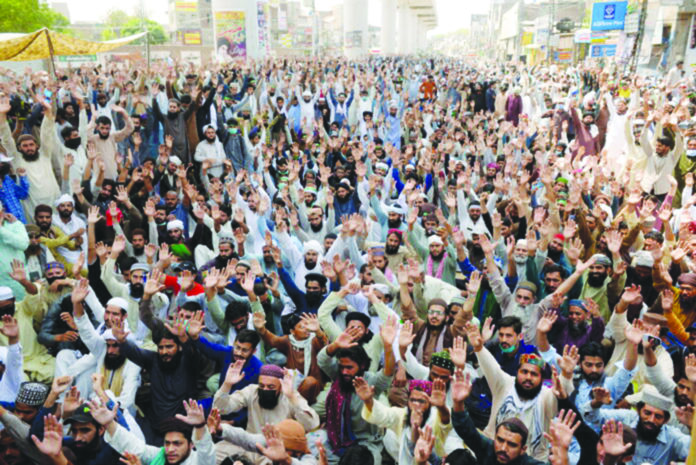On 26 May, a Christian 73-year-old man was nearly lynched by a violent mob in Sargodha but luckily the police arrived at scene and rescued him. In 2023, a mob lynched a clergyman who delivered allegedly blasphemous words in his speech at a PTI rally. In December 2021, a Sri Lankan factory manager was lynched on allegation of blasphemy in Sialkot. Mashal Yousufzai, a student in Mardan University, was lynched by a mob of 400 people in 2017, a horrific act of violence and vigilante justice. There are a plethora of such incidents that have been reported in the past few decades.
Now, on 21 June, in Swat a tourist who belonged to Sialkot, was accused of desecrating the Quran. The tourist was spotted at a local hotel in Madyan, Swat, allegedly throwing away the ashes of a burned Quran. A local resident escorted him to the police station but within hours announcements were called from Mosques and people assembled at the police station. The accused man was found with another copy of the Quran, on which some words were written, difficult to decipher. When the police refused to hand over the accused blasphemer to the people, the violent mob attacked and set the mobile vehicle and the police station on fire. They took the man away. Dragged him throughout Madyan bazar to the other end of the city. The mob chanted infidel, swine, set him on fire and Allahu Akbar. It is reported that in the meanwhile the man had been beheaded, however, eventually his body was set on fire. There were thousands of people gathered and celebrated the death of the suspect.
The irony is that no person wished to see whether the ashes were truly of the holy book Quran or whether the words written on the holy Quran were really blasphemous, rather they started lynching the man as for them the accusations of blasphemy are enough for killing a man. The police or state should not interfere if it is a case of blasphemy.
Bhutto’s amendment to the 1973 constitution declaring Ahmadis as non-Muslims, Zia’s Islamization and the subsequent political and military silence provided fertile grounds for the TTP and other extremist ideologies to emerge and penetrate in the very fabric of the society. However, the very psyche has been haunting people for decades and there is no way out. Anyone could be blamed and murdered ruthlessly. Some investigations and a few arrests would calm a section of people who deem it wrong and then another incident takes place and so on. The state has no other way to deal with such elements but through reforming education and laws.
Some people say that the incident was preplanned to disrupt the booming tourist industry and peace of the Swat valley. Others are of the opinion that it was an attempt to create a rift between Punjab and KP, as these provinces have recently come closer against the powerful lot and have forgotten the long held ethnic grudges. Nonetheless, many argue that it is to build the grounds for militant insurgency.
However, it is worth noticing that a few weeks ago, a Facebook account belonged to a person from Buner, posted blasphemous materials and had spurred outcry across the Malakand Division, especially in Swat, protests were staged for an inquiry into the account. Hence, both the incidents could have common grounds.
In Pakistan the least amount that is being allocated to a department is to the education department. Defense spending is on rise, but human development has been neglected in every sphere. The occurrence of such sheer brutality should not be surprising. These incidents that have been occurring continuously had once been backed by the state. Now the matter has escalated to the point that the police station has been attacked which is equivalent to attacking the state.
Historically, between 1947 and 1989 there were only three extra judicial killings and 10 reported cases regarding blasphemy allegations. However, the numbers rose to 89 killings between 1989 and 2021 and roughly 1500 cases, respectively. 10 extra judicial killings and 243 cases were reported only in the year 2014 (Source: CRSS). The numbers are supposed to be higher because all the cases are not reported in the press. This has widely been attributed to the introduction of Zia’s notorious blasphemy law. Since then, the least penalty for a person accused of blasphemy is death in Pakistan. This law has pushed the minorities to the wall.
Madrasahs, an Islamic educational institute for imparting Islamic teachings regarding Quran and Sunnah, have been massively built in the aftermath of the Soviet Afghan War. According to statistics, there were only 136 Madaris in 1947. In 1980 the number had risen tp around 700 across the country but in 2015 the number of Madaris had crossed 3500. Ayesha Sadiqa notes that “madrasas are the vital cogs that produce the ideology that feeds the jihadi, even if he is a product of a public school. What the madrasa does is to contribute to and sustain a narrow ideology and the narrative that rejects the opposing ideas which feeds radicalism and militancy in Pakistan”. Moreover, a PEW global survey in 2012 showed that 41 percent of Pakistani believed that Shia are non-Muslims who comprise 15-20 percent of Pakistan’s population.
Bhutto’s amendment to the 1973 constitution declaring Ahmadis as non-Muslims, Zia’s Islamization and the subsequent political and military silence provided fertile grounds for the TTP and other extremist ideologies to emerge and penetrate in the very fabric of the society. However, the very psyche has been haunting people for decades and there is no way out. Anyone could be blamed and murdered ruthlessly. Some investigations and a few arrests would calm a section of people who deem it wrong and then another incident takes place and so on. The state has no other way to deal with such elements but through reforming education and laws.























